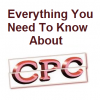It seemed time consuming enough when you first set up your pay per click (PPC) account, but the chances of your finding the perfect service the first time is slim. Companies change, new (better for you) ones pop up, and if you’re analyzing your PPC ads like you should be, you can probably see areas for improvement. From a PPC salesperson perspective, the relatively “easy” part is making a sale but the tough part is handling transitioning accounts. If a new account manager is taking over an account, whether it’s an account that’s been in the company for awhile or not, that’s when trouble arises.
Usually, when accounts are transitioned, they aren’t performing well. It doesn’t matter if the account is a defense attorney website, an all-natural bakery in Brooklyn, or a mega e-tailer. All (good) account managers will have grand ideas, but only one or two can be implemented at a time. When transitions aren’t handled well, they can cause more harm than good. Here’s how to do them right:
1. Make expectations challenging yet reasonable
Both PPC clients and managers can get overly excited, but make sure expectations are appropriate. According to Bryan Garvin, PPC expert, “Just like remodels, building and adjusting campaigns takes time. In some areas, account managers must rip down everything to the studs and begin building again. In other areas, it’s not necessary or may even be detrimental to start over.”
Start small, setting expectations for the first 30 days that tackle the little moving parts. In fact, Mind Tools offers some great tips on goal setting, and not just for PPC management. At the one month mark, all parties should feel comfortable with the direction, and at this point you can trim the fat. Don’t immediately ditch things until you see how they function, or not, in real time.
2. Lose the losers
With every single PPC account, a fantastic manager can find at least one ad group, key word or other issue that isn’t delivering. However, you need time to identify them, going campaign by campaign. Filters need to be ran to find those non-converting keywords. Refer to your goal sheet to find out which losers are holding you back, and then remove them with a heavy hand.
If you want a more advanced filtering approach, techniques. However, don’t forget about search funnels. Under the Tools tab, click on Conversion to see the overall search funnels reporting options. Remember that many ad groups, campaigns or keywords are going to stick during transition, lest the entire thing fall apart.
3. Offer negative keywords
As your analyzing, you’ll find keywords that are negative and can be used. These should be under brand new lists for future use, such as words like “discount” that might not be appropriate for this campaign (but likely will be for others). Use the Shared Library in Bing or Google to create negative keyword lists.
4. Test everything
From current campaigns to the latest ad copy, make sure everything is tested. This will show you where new ad copy can assist. You might notice just one ad is running in any given group, and even if it’s performing well it could do a lot better. Make sure there are at least a couple of ads in any ad group. Other issues might include uneven ad rotating, poor rotation schedules, or campaign settings have too low of conversions.
Most importantly, don’t forget about easy fixes. Make sure those bid modifiers are on point, and that cost per conversion is balanced with a negative modifier. Your ad delivery method should also be customized, and accelerating them (if you have the budget for it) is a great start.



